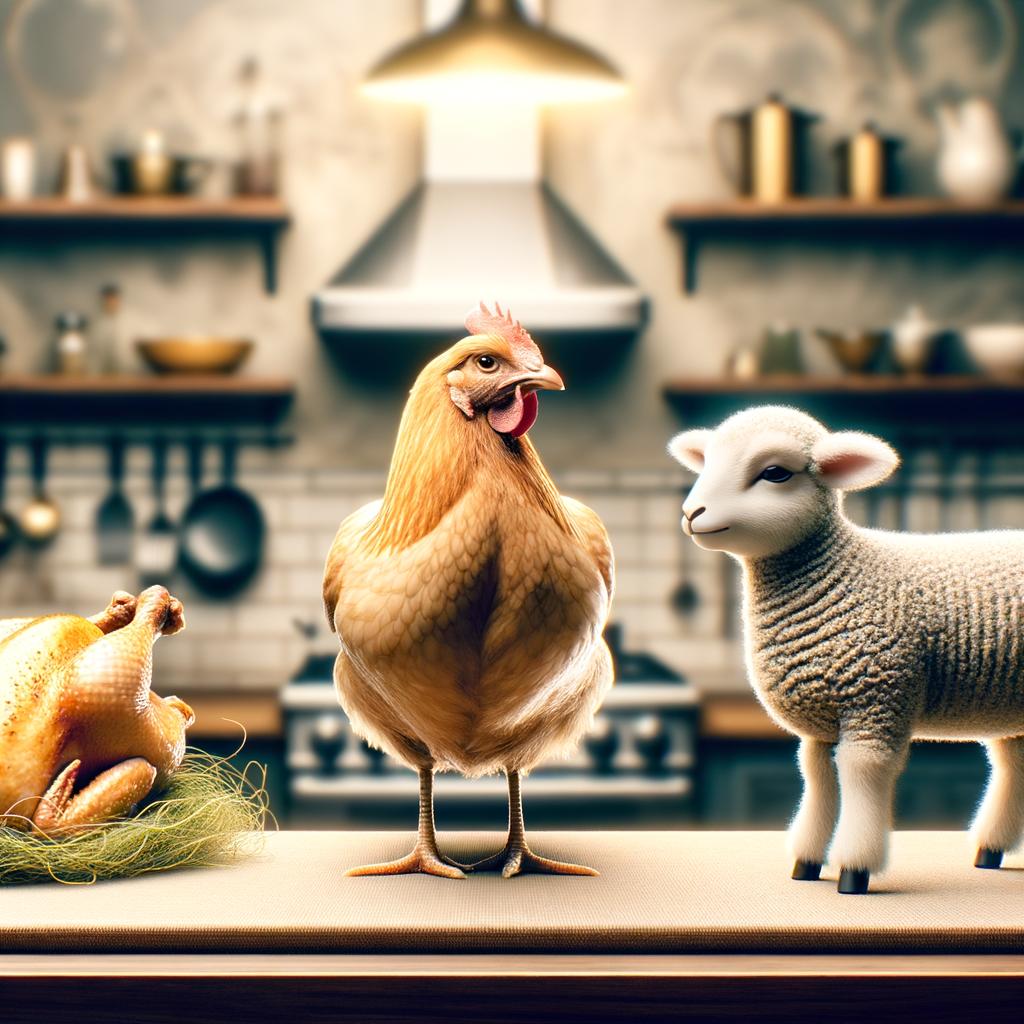Chicken or Lamb

Description
Welcome to the world of chicken, a versatile and universally loved ingredient. Chicken's appearance is quite familiar to most of us; its raw form is a light pink flesh that turns a delectable golden brown when cooked. The texture of chicken is tender and juicy, providing a satisfying bite that is both comforting and delightful. Its flavor profile is a blank canvas, absorbing the flavors of the ingredients it is cooked with while retaining its own unique, slightly sweet taste. What sets chicken apart from other meats is its versatility. From the lean, mild breast to the dark, rich thigh, each part offers a different culinary experience.
Primary Uses
Chicken is a staple in most cuisines around the globe, from the aromatic curries of India to the hearty stews of France. It's the star of the show in dishes like Coq au Vin and Chicken Tikka Masala, but also plays a supporting role in salads, sandwiches, and soups. Chicken is not only used for its meat; its bones are boiled to create a rich, flavorful broth that forms the base of countless dishes. Beyond its culinary uses, chicken also holds cultural significance in many societies, often being used in religious rituals and celebrations.
History
The domestication of chicken dates back to 5400 B.C. in Southeast Asia. These birds were not initially raised for their meat, but for cockfighting, a tradition that still exists today in some parts of the world. The Romans were the first to start consuming chicken in large quantities, recognizing its nutritional value and delicious taste. Over time, chicken has become one of the most consumed meats worldwide. There is a folklore in the Jewish tradition that a chicken is swung over one's head to absolve them of their sins during the Day of Atonement, symbolizing the transfer of sins to the chicken.
Nutritional Information
Chicken is a nutritional powerhouse, packed with high-quality protein that helps build and repair body tissues. It's also a good source of essential vitamins and minerals like Vitamin B6, which aids in metabolism, and selenium, which boosts the immune system. Chicken is lower in saturated fat compared to red meats like lamb, making it a healthier choice for those watching their cholesterol levels. However, it's important to note that the skin of the chicken is high in fat, so for a leaner meal, it's best to remove the skin before eating.
Chicken's story is one of versatility, resilience, and universal appeal. It's a testament to the fact that food is not just about sustenance, but also about history, culture, and the shared experiences that bring us all together.

